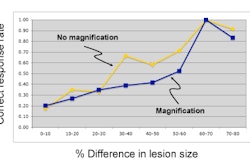Dear AuntMinnie Member,
Diamonds are forever, but PACS networks certainly aren't. Even the most robust and stable software eventually needs an upgrade, and, once its useful life is over, you may need to migrate your PACS data to an entirely new software architecture.
Managing these kinds of PACS changes was the topic of a presentation yesterday from the Digital Healthcare Information Management Systems (DHIMS) meeting in San Antonio. Staff writer Erik L. Ridley is on the scene, filing reports for our PACS Digital Community.
In an opening-day presentation, Dr. Steven Horii of the University of Pennsylvania Medical Center in Philadelphia offered tips on how to handle things like software upgrades, vendor changes, and migrating data.
One suggestion: a "prenuptial" agreement with your PACS vendor that gives you guaranteed access to your database and data. Find out what else you can do to protect yourself by clicking here.
Cannavo on the DRA and PACS
In related news, our always-opinionated PACS expert Michael J. Cannavo proffers his views on why the much-maligned Deficit Reduction Act (DRA) is the best thing to happen to PACS since DICOM 3.0.
That kind of talk may sound heretical in the radiology community, but hear him out. Cannavo believes that PACS can yield efficiency gains through improved workflow, helping imaging centers improve their procedure volume and ultimately thrive under the DRA's lower reimbursement rates.
PACS can even offer facilities a marketing edge through technologies such as CD and DVD burners that enable patients to take their images home with them. Try doing that with x-ray film and see how fast it'll eat a hole in your budget.
Decide for yourself whether Cannavo's logic makes sense by clicking here. And check back in the PACS Digital Community over the next few days for more reports from the DHIMS conference.
Breast biopsy for lobular neoplasia?
In another article, we examine the topic of whether minimally invasive breast biopsy is appropriate for women with lobular neoplasia of the breast. A new story we're featuring in our Women's Imaging Digital Community indicates that core or vacuum-based biopsy techniques may underestimate the extent of disease in these cases, and that surgical excisional biopsy should be recommended.
Get the rest of the story by clicking here, or visit our Women's Imaging Digital Community at women.auntminnie.com.



















